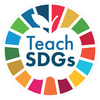|
By Nam Ngo Thanh, #TeachSDGs Global Goals Educator Task Force Member, Vietnam When I asked many teachers in Vietnam as well as around the world about teaching United Nations' Sustainable Development Goals, the answer I often got was "What is it?" or "Is it important?” I realized that teaching the goals of sustainable development for students was still a new thing to many teachers. Why did I decide to teach #SDGs to students? As we all know, the world is facing many problems, such as poverty, pollution, war, climate change, and more. These problems directly affect the survival of mankind. Therefore, if people are not aware of the importance of the remedy and the ways to prevent problems, the quality of life will be increasingly threatened. I think that educating on these issues needs to be started in the younger generation, namely students. That is why teaching sustainable development goals has become an important part of my teaching. For myself, to have access to the curriculum SDGs, my professional skills have been increasingly enhanced. My teaching is not only directed to knowledge in textbooks, but also social significance and meeting the needs of life. How did I know about the goal of sustainable development of the United Nations? Actually, I have only known these goals since 2017. Although before, my students did many projects related to issues in life, such as traffic safety, environment, religion, and food, but I did not know that these projects were related to the goals of sustainable development. It wasn't until I had a conversation with Fran Siracusa as well as taking the Teaching Sustainable Development Goals course on the Microsoft Education site that I realized these goals clearly are already in my projects. Since then, I have started to learn more and have become really fascinated by the human values that these goals bring. How have I started? First, I worked to develop a clear understanding about these 17 goals and then started to find out the relationship between them and my textbook lessons. It is interesting to realize that every lesson that my students learn daily is tied to at least one of the 17 goals. After that, I started introducing #SDGs to my students. Fortunately, I found a lot of resources for the introduction, including The World's Largest Lessons. I do not impose #SDGs on students, but let them naturally take to them by letting them draw their own goals after reading a story, watching a movie, etc. For example: Water is Life project: After watching the movie about water shortage in South Africa, students will analyze and find out the sixth goal in the project. I believe that by their own self-discovery, students can understand the meaning of these goals in human life. Technology – Let’s be Friends In teaching SDGs, I have seen that technology has impacted students' lives in such a positive way. It has taken students to new places and allowed them to use the 4Cs of 21st century learning (collaboration, communication, critical thinking, creativity). If technology is used properly, it will help to bring the voice of students to the world. In my teaching of SDGs, technology plays an indispensable role. Students are encouraged to use technology in learning activities that demand problem-solving, decision-making, teamwork, and innovation. By using technology, students can create products such as digital storybooks, artwork, presentations, and movies. For example, in the Water is Life project, my students use Sway to tell their water using story, Microsoft Forms to conduct a water experiment using survey of people in their community, PowerPoint to create posters to call for a sense of water savings, and Skype to chat with experts on the importance of water. Sustainable development goals are right in your classroom! Let students work with technology as a friend, learning these goals will become more enjoyable and effective. Do Not Teach #SDGs Alone My experience suggests that teaching #SDGs is most effective if these goals are repeated over place and time. One way to do this is to connect with your school and the parents to share that comprehensive SDG teaching is an important choice. For example, when learning about the the sixth goal, we did the "I am a drop" campaign by creating slogans calling for water savings in many places in the school. At home, parents also reminded students to save water. From there, students realized that saving water was their responsibility.  Mr. Nam Thanh (@mrnamvas) is a primary school teacher in Vinschool in Ho Chi Minh City, Vietnam. He has authored multiple articles, and he has been nationally and internationally recognized for the implementation of creativity and the integration of technology into his teaching. In 2015, he was presented with the Microsoft Innovative Educator Expert Award, and in the same year he represented Vietnam at the Microsoft Global Forum. He is Microsoft Master Trainer, Skype Master Teacher, and Microsoft Teacher Ambassador. Mr. Nam works passionately to develop creative approaches to delivering quality education to his students in ways that inspire them to learn. Twitter: @mrnamvas Website: https://mrnamvas.wixsite.com/fivesafefingers Comments are closed.
|
AuthorSTeachSDGs Team & Contributors Archives
November 2019
Categories |




 RSS Feed
RSS Feed